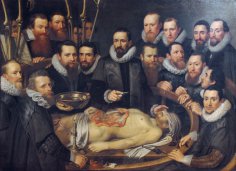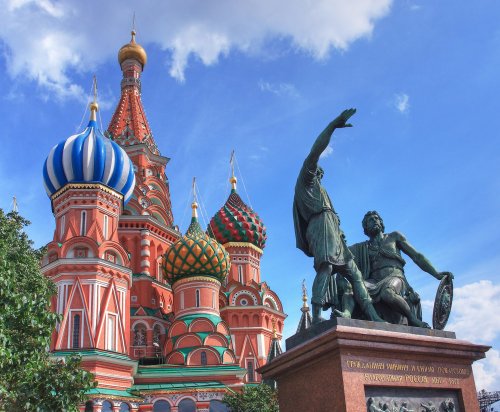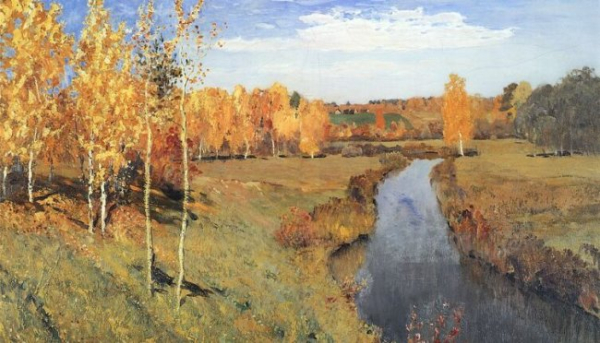
Autumn in painting is not just a season, it is a special state of light, a slow rhythm, a shade of silence, in which everything has already happened, but nothing has yet gone completely. It comes to paintings not with a calendar, but with the first yellow leaves, transparent air, a penetrating chill in the morning shadows.
Artists have been trying to capture this moment for centuries, and each did it in their own way: some through the glow of gold, some through rainy streets, and some through the play of the wind in the treetops.
Autumn on canvases is always a bit of a farewell, and also generosity. It is as if nature brings to light everything it managed to create over the summer and lays it out before us like a rich palette. The artist is only an intermediary.
1. Gold of leaves
When looking at Levitan's “Golden Autumn,” it seems as if the paint is glowing from within. He painted as if each brushstroke contained a remnant of summer warmth. The foliage glows against the deep blue sky for a reason: the blue enhances the sense of gold, and the composition itself draws the eye into the distance, to where the river slowly disappears around the bend.
In Monet, gold is softer—it dissolves in the morning mist, as if the artist wants us to feel not only the color, but also the damp air.
2. Shadows and seasons
In autumn, the sun is lower, meaning the shadows become longer and softer.
In “Autumn Landscape,” Savrasov uses them as lines that lead the eye to the center of the painting, creating the feeling of a leisurely day.
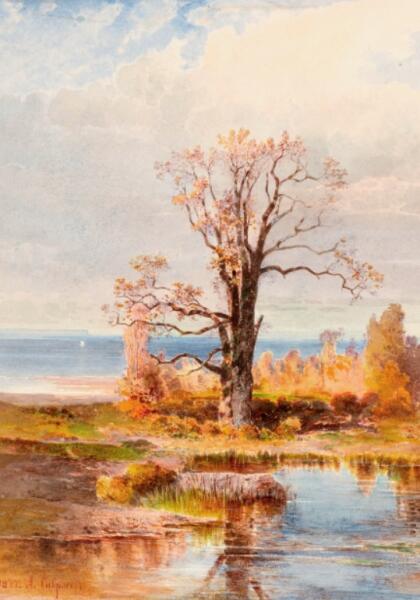
Alexey Savrasov, Autumn Landscape, 1877, public domain
In Krymov’s work, the shadows on the grass are not just dark spots, but a whole network that connects the trees, the road, and the houses.
Artists knew that shadows can tell us as much about the season as leaves.
3. A slight coolness in the palette
Even where the colors are saturated, the artists insert notes of coolness – blue, purple or gray.
In Pissarro, where autumn fields breathe freshness, or in Van Gogh, where cold brushstrokes break through warm ones, as a reminder: winter is coming. This technique makes the painting lively, because autumn is always a balance of warm and cold.
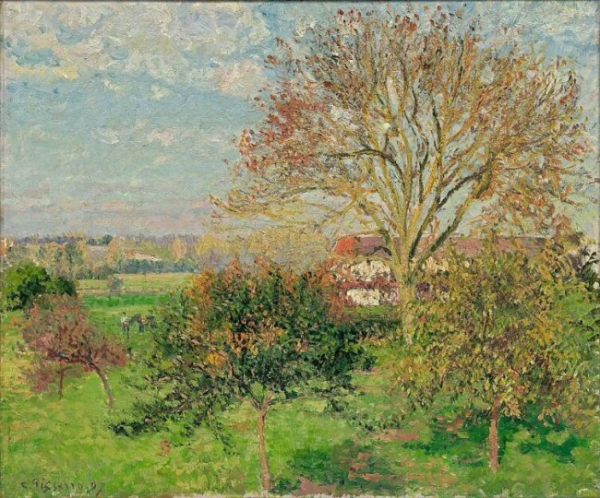
Camille Pissarro, Autumn Morning at Eragny, 1897, public domain
4. A detail that brings you back to reality
In the very center of a golden pine forest, Savrasov may have a puddle sparkling, in Monet a figure of a passerby may flash in the far corner, and in Pissarro a tiny cart on the road.
These elements are not needed for the plot, but so that the viewer feels that this is not a fantasy, but a moment in which one could find oneself.
5. Rhythm of branches and lines
When the leaves thin out, the branches become part of the composition.
In Hiroshige's Japanese prints, the lines of bridges and tree trunks form a clear geometric rhythm, enhancing the sense of order in nature. In Van Gogh, branches and brushstrokes are like music, full of vibration and movement.
In both cases we see that the artist feels not only the color, but also the structure of autumn.
6. Movement or rest
Levitan painted silence. His autumn is stillness, when everything freezes in golden light.
Van Gogh, on the other hand, makes the colours swirl, turning the leaves into vortices. The contrast shows that the same season can sound like a slow romance or a stormy symphony.
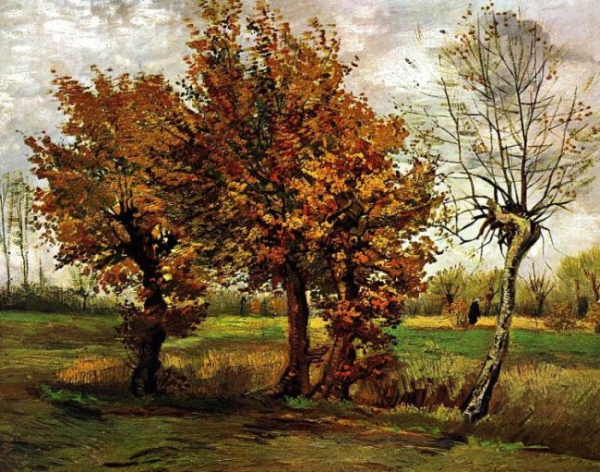
Vincent van Gogh, Autumn Landscape with Four Trees, 1885, public domain
7. Autumn as a personal story
For some artists, autumn is not only a landscape, but also an internal mood.
In Bryullov's work it is about drama, in Claude Lorrain's it is about harmony, in Kustodiev's it is about fairs, the rustling of dresses and bright umbrellas. Autumn on canvases often becomes the background for a human story: about a meeting, a parting or a quiet walk.
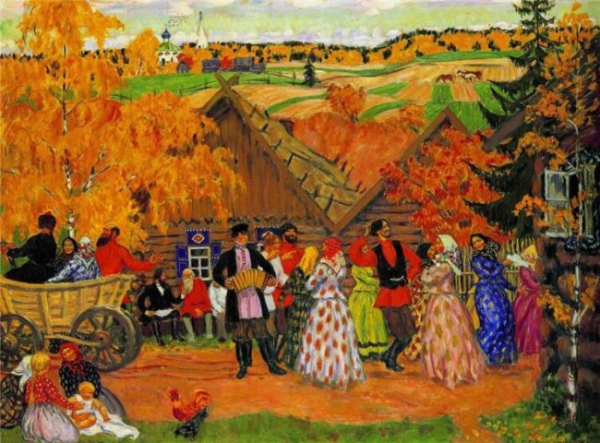
Boris Kustodiev, “Autumn Rural Festival”, 1914, public domain
Autumn in painting is always a little more than nature. It is about time, about how everything in the world passes, but passes beautifully. Each artist chooses what is most important in it: the gold of foliage, the fog over the river, the cold air or the warmth of the last sunny days. Looking at the painting, we choose our own – and this is, perhaps, the main magic.
Sometimes it seems that autumn lives longer on canvas than in reality. There it is in no hurry, in no hurry to shed its leaves, and is not afraid of snow. It remains in that very moment when everything is ready for change, but it has not yet arrived. And perhaps that is why we love it so much – both in life and on canvas.


